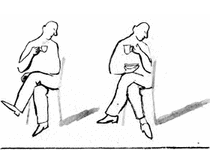- Dla kandydatów
- Dla studentów
- Informacje dla studentów I roku
- Informacje ogólne
- Informator o studiach
- Organizacja roku
- Zarządzenia Prodziekana ds. studenckich
- Kolokwia i egzaminy
- Prace i egzaminy dyplomowe
- Materiały dydaktyczne
- Pracownie
- Pracownia Projektów Studenckich
- Zespołowe projekty studenckie
- Oprogramowanie
- Konta i hasła w sieci studenckiej
- Studia doktoranckie
- Studia podyplomowe
- Samorząd, koła, kluby, chór
- Stypendia i sprawy socjalne
- Oferty pracy
- Dla pracowników
- Dla gości
- Badania
- Rada Naukowa Dyscypliny Nauki Fizyczne
- Kierunki badań
- Priorytetowy Obszar Badawczy II IDUB
- Realizowane projekty
- Sekcja ds. Obsługi Badań
- Seminaria i konwersatoria
- Konwersatorium im.J.Pniewskiego i L.Infelda
- Algebry operatorów i ich zastosowania w fizyce
- Środowiskowe Seminarium Fizyki Atmosfery
- Seminarium Zakładu Biofizyki
- Seminarium z fizyki biologicznej i bioinformatyki
- Seminarium Fizyki Ciała Stałego
- Multimedialne seminarium z ekono- i socjofizyki
- Exact Results in Quantum Theory
- Środowiskowe Seminarium Fotoniczne
- Seminarium Fotoniki
- Seminarium Zakładu Fotoniki
- Seminarium Gamma
- Seminarium "High Energy, Cosmology and Astro-particle physics (HECA)"
- Środowiskowe Seminarium z Informacji i Technologii Kwantowych
- Seminarium Fizyki Jądra Atomowego
- Seminarium fizyki litosfery i planetologii
- Seminarium Fizyki Materii Skondensowanej
- Seminarium "Modeling of Complex Systems"
- Seminarium nauk o widzeniu
- Seminarium "Nieliniowość i Geometria"
Seminarium Optyczne
- Soft Matter and Complex Systems Seminar
- String Theory Journal Club
- Seminarium Koła Struktur Matematycznych Fizyki
- Seminarium "Teoria cząstek elementarnych i kosmologia"
- Seminarium KMMF "Teoria Dwoistości"
- Seminarium Teorii Względności i Grawitacji
- Seminarium "The Trans-Carpathian Seminar on Geometry & Physics"
- Seminarium Fizyki Wielkich Energii
- Konferencje
- Publikacje
- Research Highlights
- Optyka na Uniwersytecie Warszawskim
- Wydział
- Misja i strategia
- Władze Wydziału
- Zarządzenia Dziekana
- Zarządzenia Prodziekana ds. studenckich
- Struktura organizacyjna
- Historia Wydziału
- 90 lat Wydziału Fizyki
- 100 lat Wydziału Fizyki
- Fizykoteka – Wirtualne Muzeum Wydziału Fizyki UW
- Dziekanat
- Rada Wydziału
- Jakość kształcenia
- Stopnie i tytuły naukowe
- Nagrody Wydziału Fizyki
- Biblioteka
- Ośrodek Komputerowy
- Pracownicy i doktoranci
- Zamówienia publiczne
- Rezerwacja i wynajem sal
- Oferty pracy
- Osoby
- Zapraszamy
- Media
Seminarium Optyczne
2006/2007 | 2007/2008 | 2008/2009 | 2009/2010 | 2010/2011 | 2011/2012 | 2012/2013 | 2013/2014 | 2014/2015 | 2015/2016 | 2016/2017 | 2017/2018 | 2018/2019 | 2019/2020 | 2020/2021 | 2021/2022 | 2022/2023 | 2023/2024 | 2024/2025 | Seminarium na YouTube
2024-10-10 (Czwartek)
Katarzyna Krajewska (IFT UW)
Strong- versus ultra-strong-field physics
When increasing the intensity of optical pulses we can probe different regimes of laser-matter interactions. Specifically, in the area of strong-field physics we deal with bound electrons that undergo various atomic transformations due to the interaction with the laserfield. The theoretical framework behind is non-relativistic quantum mechanics, based on the time-dependent Schrodinger equation. Going toward higher intensities, we reach the ultra-strong-field regime. Here,we deal with free electrons whose quiver energy in a laser field becomes comparable to their rest mass energy. Thus, we enter the area governed by relativistic quantum mechanics, that is based on the Dirac equation. The physics in those two regimes has to be treated using different theoretical methods and inherently different physical effects should be observed there. But is it always the case? In my talk, I will address this question considering two seemingly different physical processes, representing each of those regimes: ionization and electron-positron pair creation.
2024-10-03 (Czwartek)
Bartosz Krajnik (Politechnika Wrocławska)
Fluorescence Microscopy of Single Nanostructures: From Imaging to Molecular Dynamics
Single-molecule microscopy and spectroscopy are advanced research techniques that enable the real-time tracking and analysis of individual molecules. These methods provide detailed insights into molecular dynamics, interactions, and structures, which cannot be achieved by studying phenomena at the ensemble level. Two techniques in this field, SOFI (Stochastic Optical Fluctuation Imaging) and defocused wide-field fluorescence microscopy, offer unique approaches for high-resolution molecular/nanoparticle analysis. SOFI is based on the statistical analysis of fluorescence signal fluctuations generated by single emitters. This allows for image reconstruction with a resolution beyond the diffraction limit of light, particularly for densely labeled samples. Defocused wide-field fluorescence microscopy involves imaging under deliberately defocused conditions. The emerging single-molecule patterns provide information about the orientation and structure of individual molecules. This technique is particularly suitable for studying rotational dynamics (e.g., molecular motors), allowing for the direct observation of even tens of individual molecules. Both methods are powerful tools in modern molecular research, providing extensive possibilities for analyzing structures and processes at the nanoscale level.
Stron 3 z 3







